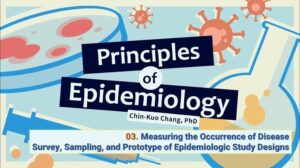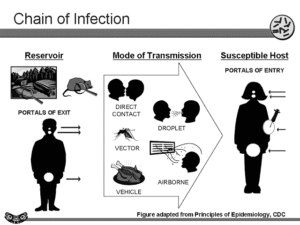Back to: MICROBIOLOGY 300 LEVEL
Welcome to class!
Hello champion! It’s always a pleasure to have you back in class. Today’s topic is one that connects what you learn in microbiology to what happens in your community, hospital settings, and even the national health system. We’re talking about the Principles of Disease Occurrence and Measurement—a very important foundation in understanding how diseases spread, affect populations, and how we track them to prevent outbreaks.
Principles Of Disease Occurrence And Measurement
Have you ever wondered why some diseases seem to appear suddenly in a particular area, while others are always around? For example, malaria is common in many parts of Nigeria year-round, but something like COVID-19 came suddenly and spread rapidly. Understanding how diseases occur and how we measure them is the work of epidemiology.

This is like being a health detective—finding out who gets sick, when, where, and why. This knowledge helps health authorities to respond quickly and prevent further spread.
Key Terms in Disease Occurrence
Let’s break down some useful terms in a simple, relatable way:
Endemic: A disease that is constantly present in a population.
Example: Malaria is endemic in many parts of Nigeria.
Epidemic: A sudden increase in cases of a disease in a particular area.
Example: Lassa fever outbreaks in certain Nigerian states.
Pandemic: When an epidemic spreads across several countries or continents.
Example: COVID-19 became a global pandemic.
Sporadic: A disease that occurs irregularly and infrequently.
Example: A few isolated cases of rabies in remote villages.
Measurement of Disease Occurrence
To track diseases, we use certain measurements. These help us to compare how serious or widespread a disease is in different places or times.
1. Incidence:
This is the number of new cases of a disease in a population during a specific period.
It tells us the rate of spread.
Example: If 50 students out of 1,000 develop food poisoning in a week, the incidence is 50 per 1,000 per week.
2. Prevalence:
This is the total number of existing cases (new and old) in a population at a specific time.
It shows the burden of the disease.
Example: If 200 students in a university currently have asthma, the prevalence is 200 per total number of students.
3. Mortality Rate:
The number of deaths due to a disease in a given population and time.
4. Morbidity Rate:
Refers to how many people are affected by a disease, not necessarily fatal, but causing illness.
Why These Measurements Matter
These principles are used every day in Nigeria by organisations like the Nigeria Centre for Disease Control (NCDC). For instance, during cholera outbreaks, they calculate incidence to know how fast it’s spreading and where to intervene. This helps in sending medical teams, clean water, and public health messages to the right areas.

Imagine a university hostel where students start falling ill after eating at a new canteen. The health unit records 20 new cases in two days. That’s the incidence. If they find 60 students already sick from similar symptoms over the past two weeks, that’s the prevalence. If unfortunately, 2 students die, that would be recorded under mortality rate. These figures help the medical team decide whether it’s just a small issue or a larger epidemic.
Summary
- Disease occurrence can be described as endemic, epidemic, pandemic, or sporadic.
- Incidence measures new cases; prevalence includes all existing cases.
- Mortality rate measures death; morbidity rate measures illness.
- These measurements help health professionals and policymakers control and prevent diseases effectively.
Evaluation
- What is the difference between incidence and prevalence?
- Give one example of an endemic disease in Nigeria.
- What term describes a disease that spreads across multiple continents?
- Why is disease measurement important in public health?
- How would you describe an outbreak of food poisoning among students over one weekend?
Well done, superstar! You’ve just learned how diseases are tracked and understood in the real world. These principles can help you become a game-changer in public health, research, or clinical care. Keep pushing forward—Afrilearn is here to support you every step of the way. You’re doing amazing!
